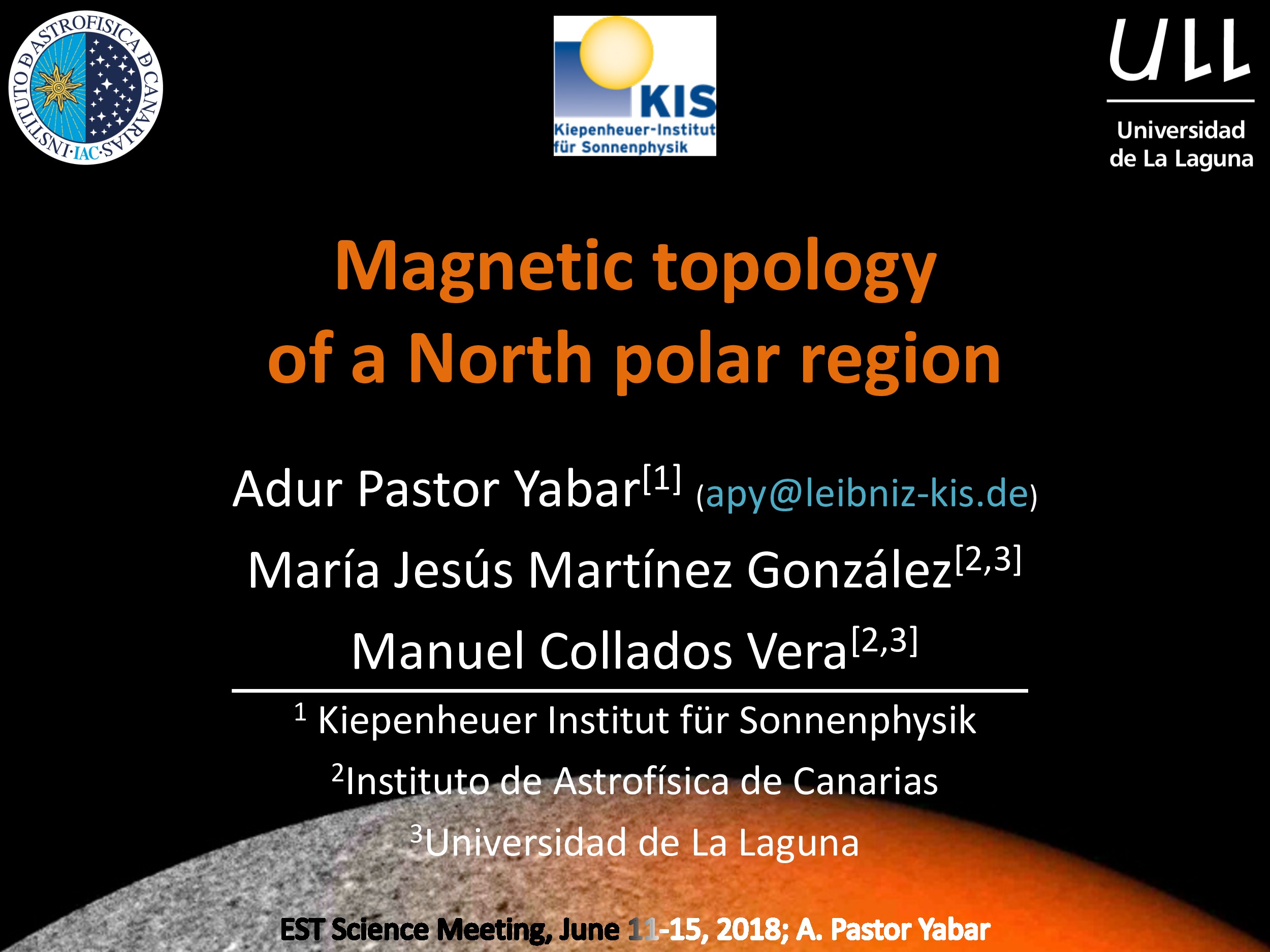Affiliation
Kiepenheuer-institut fuer sonnenphysik
Main category
Natural Sciences (Astrophysics and Astrononmy)
Abstract
The magnetism at the poles is similar to that of the quiet Sun in the sense that no active regions are present there. However, the polar quiet Sun is somewhat different from that at the activity belt as it has a global polarity that is clearly modulated by the solar cycle. We study the polar magnetism near an activity maximum when these regions change their polarity, from which it is expected that its magnetism should be less affected by the global field. To fully characterise the magnetic field vector, we use deep full Stokes polarimetric observations of the 15648.5 ˚A and 15652.8 ˚A Fe I lines. We observe the north pole as well as a quiet region at disc centre to compare their field distributions. In order to calibrate the projection effects, we observe an additional quiet region at the east limb.
We find that the two limb datasets share similar magnetic field vector distributions. However, we infer a new population of magnetic field distributions at the limbs that are different from the distribution inferred at disc centre. We propose that this new population at the limbs is due to the observation of unresolved magnetic loops as seen close to the limb. This is the first (indirect) evidence of small-scale magnetic loops outside the disc centre and would imply that these small-scale structures are ubiquitous on the entire solar surface.
The proper characterisation of this new population of magnetic fields imposes strong observational constraints. First, quiet Sun magnetism shows very faint polarisation signals. Second, very high spatial resolution is required to resolve them. Finally, since the inferred unresolved loops show a polarity imbalance, bigger fields-of-view are necessary to address whether it is due to a statistical fluctuation or it is related with the solar magnetic cycle. Currently, these goals cannot be achieved by any solar telescope and EST would be an excellent candidate to accomplish them.
Do you have problems viewing the pdf-file? Download presentation
here
If the presentation contains inappropriate content, please
report the presentation. You will be redirected to the landing page.
